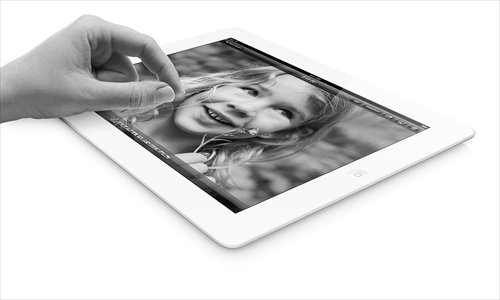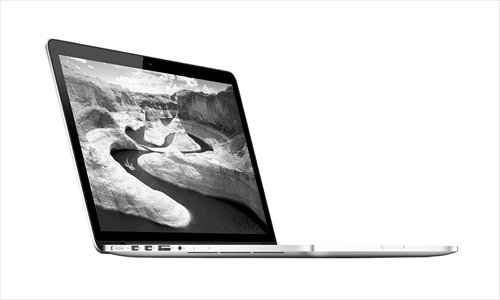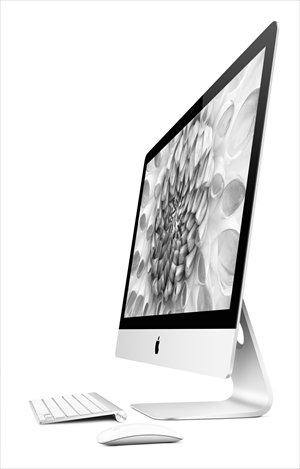Apple goes mini
Apple finally took the wraps off the iPad mini, its first ever pocket-sized tablet device on Tuesday, foraying into an arena that was once snubbed by the tech giant's visionary steerer Steve Jobs as destined to be "dead on arrival" but has since gained popularity among consumers.
The 7.9-inch much-anticipated gadget was introduced by Tim Cook, Jobs' successor, at a launch event in San Jose's California Theatre. "We told you earlier this year you would see some incredible innovation from Apple across the year. We think we kept our promise," Cook said at the invitation-only event, as quoted by Reuters. The smallest new member of Apple's hot-selling iPad lineup, which accounted for roughly 26 percent of the company's total revenue in its fiscal third quarter ending in June, is expected to further cement Apple's foothold in the tablet market, despite groans over the gadget's less satisfying tech specs combined with a bigger price tag than expected.
Apple's dominance in the market for full-sized tablets will be extended to the "7.x-inch" tablet market, "driving rapid growth of the segment in 2012 and 2013," Rhoda Alexander, director of tablet and monitor research for the US-based consultancy firm IHS iSuppli, forecast in a research note on Tuesday.
Apple has used a 9.7-inch display size since Jobs first announced the iPad in January 2010, earning the company's formidable presence in the tech arena. Global shipments of Apple's iPad products totaled 17 million in the second quarter, uplifting its market share to 69.6 percent, IHS iSuppli's latest figures showed. Samsung and Amazon trailed in second and third place, with 9.2 percent and 4.2 percent respectively.
"Apple's entry into the smaller segment will likely help the company penetrate into a huge population of lower-end users, which is likely to drive the company's profit engine in the years to come," Li Yanyan, an analyst at market research firm Analysys International, told the Global Times Wednesday.
The pocket-sized range tablets, which have met with thundering applause from consumers ever since popular products such as Google's Nexus 7 and Amazon's Kindle began hitting the shelves in mid-2011, will see a boom in the near future, according to the consultancy firm IHS iSuppli, which predicted global sales of 7-inch tablets would double in 2012 to 34 million units from the previous year.
The Chinese mainland continues to be left out of the California-based tech giant's prioritized markets, being excluded from the first batch of countries and regions to receive the iPad mini, of which the Wi-Fi-only version will be available in both black and white on November 2. Pre-orders for the new gadget also start on Friday through Apple's online store in the first batch of markets, including Hong Kong. The iPad mini will go for at least HK$2,588 ($333.93) in Hong Kong.
There is currently no information about the product's mainland launch, except for Apple's mainland official site's statement of price cuts for its third-generation iPad of 300 to 400 yuan ($48 to $64) in the wee hours of Wednesday morning Beijing time. A search for iPad mini on taobao.com, the country's largest online retailer, however, reveals multiple results that could help consumers fetch the product, mostly from Hong Kong.

iPad mini
The latest and long-rumored smaller gadget newly added to the iPad lineup claims to be much thinner and lighter. The 7.9-inch new device is only 7.2 mm thin, weighing in at 308 g, the slimmest of its family. Like the iPhone 5, the new device also uses the new eight-pin Lightning connector.
The new mini-sized gadget shows Apple's continued enviable flair for design, although it falls short of expectations in terms of tech specifications. The gadget comes in a resolution of 1,024 by 768 at 163 pixels per inch, overshadowed by its third-generation iPad with Retina display that boasts a resolution of 2,048 by 1,536 at 264 pixels per inch. Its sporting a dual-core A5 chip instead of the latest A6 chip also makes the gadget less powerful.
Above all, the iPad mini's pricing is believed to be higher than expected, with the Wi-Fi model going for at least $329. This compares with two solid products running on the Android system in the same size range, the 7-inch Kindle Fire and Nexus 7, both of which are priced at $199. The Nexus 7, launched last summer, even boasts a higher resolution, 1,280 by 800 in 7 inches, and the newest 7-inch Kindle Fire HD, announced by Amazon in September, also upgraded its resolution to be on par with Nexus 7.
While some industry watchers worry that the iPad mini's pricing may curb consumer demand, most analysts show more optimism. "It is a cool gadget. Those desiring a smaller iPad would probably not be scared off by its price," Kevin Wang, director of China research at IHS iSuppli in Shanghai, told the Global Times on Wednesday.
The iPad mini is expected to serve as a key boost to shipments of iPad products in the last quarter, Wang forecast.

Fourth-generation iPad
Apple also surprisingly unveiled its fourth-generation iPad, seven months after the launch of its third-generation iPad, a rare break from its annual pattern of updates.
Featuring a 9.7-inch Retina multi-touch screen with the same resolution as its previous model, the new iPad boasts the newest A6X chip, which is capable of delivering up to twice the CPU and graphics performance of the A5X chip. It also sports the new Lightning connector. Coming in both black and white, the new iPad with Wi-Fi will be available on November 2 with a price tag starting at $499.
The iPad mini and the new iPad will start shipping Wi-Fi plus cellular models several weeks after the Wi-Fi versions, according to Apple, which failed to reveal the exact date.
Apple's unexpected launch may be due to concerns that the iPad mini is likely to grab consumer attention in a way that impacts sales of its full-sized tablets, said Li Yanyan with Analysys International. A series of full-sized Android tablets that are slated to be launched later this month may also force Apple to announce the new iPad ahead of schedule, Li believes.

New MacBook Pro
Apple also introduced its new 13-inch MacBook Pro with Retina display on Tuesday, just a few months after the company's announcement of its 15-inch MacBook Pro featuring a super high-definition (HD) Retina display. The new 13-inch product, thinner and lighter, claims a native resolution of 2,560 by 1,600 at 227 pixels per inch, even overshadowing its 15-inch predecessor that once made a splash with a formidable 220 pixels-per-inch resolution at its launch in June.
The new 13-inch laptop hit the shelves on Tuesday, going for at least $1,699. It may be unparalleled in terms of super resolution as similar products appear to be less impressive, such as Asus' Zenbook Prime UX31A ultrabook that packs a 13.3-inch display, featuring a resolution of 1,920 by 1,080.

New iMac
Apple also unveiled its new iMac, its all-in-one desktop offering, on Tuesday. The new iMac boasts more powerful performance and new Fusion Drive that integrates 128 gigabytes of flash with a standard hard drive of 1-3 terabytes.
The 21.5-inch iMac will go on sale in November, going for at least $1,299, and the 27-inch version will be available for at least $1,799 in December, while the Mac mini was immediately available Tuesday, retailing for at least $599. Hewlett Packard recently announced its latest Spectre Once, a 23.6-inch all-in-one option, powered by the newest Windows 8 system, which may be a close rival to this Apple. The Spectre Once is expected to arrive on the market in November, going for $1,299.